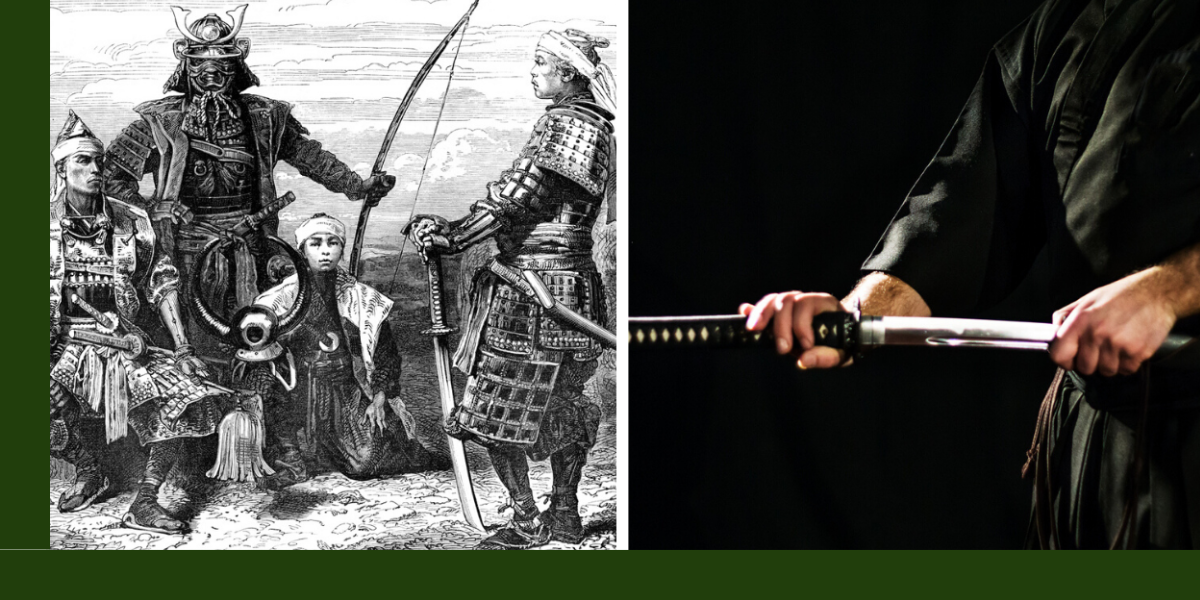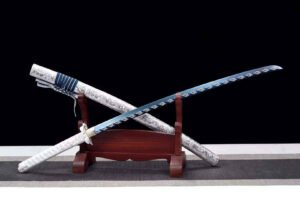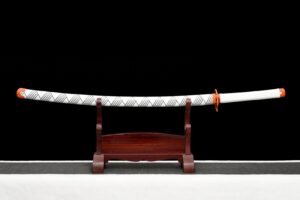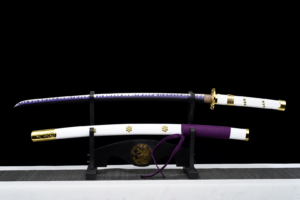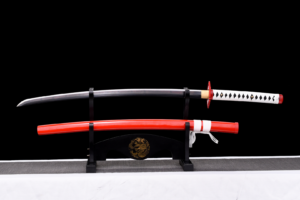Few things are as emblematic of Japan as the legendary katana. Its elegant silhouette masks the rich culture and heritage forged into every inch of the sword. The trusted weapon of the samurai, the katana has become a magnificent work of art, a symbol of social status, and a lasting legacy of Japan’s colorful past. But what is a katana? Join us in this article as we explore the mythical katana, its history, and how this sword symbolizes the unwavering spirit of the samurai.
What is a Katana?
Definition
The term “katana” first appears in the Chronicles of Japan (Nihon Shoki), dating back to the 8th century AD. This historical document describes the katana as a single-edged sword, differentiated from the double-edged “tsurugi.” The katana is distinguished by its iconic curve, more refined than that of the older Japanese sword, the “tachi.”
Characteristics
- Length: The blade extends at least 60.6 centimeters (23.86 inches) from the guard (“tsuba”) to the tip.
- Handle: The katana has a long handle allowing for two-handed use, offering increased stability and security.
- Curved Blade: The blade’s moderate curve ensures smooth and efficient handling.
- Scabbard (“saya”): The katana is drawn from the scabbard with the edge facing up, facilitating quick and precise cuts.
Attributes of a Katana
Blade Curvature (Sori)
The curvature, or “sori,” is defined by a Japanese master swordsmith (katana-kaji). The average curvature is about 1.5 centimeters, positioned either at the center of the blade, near the guard, or towards the tip.
Hamon (Temper Line)
The “hamon” is the temper line that separates the soft back of the blade from the hard edge. This unique tempering process allows the blade to resist breaking while maintaining a razor-sharp edge.
Jigane (Blade Surface)
The blade surface is non-reflective and features dark hues due to the satetsu, or iron sand, from Tamahagane. This combination gives the blade a dark gray spine and a light gray edge.
Jihada (Grain Patterns)
The grain patterns, or “jihada,” result from the heating, hammering, and folding process of the Tamahagane steel. They create unique patterns such as swirls and waves.
Guard (Tsuka)
- Tsuba (Katana Guard): The tsuba protects the hands from accidental cuts and can be circular, rectangular, or in the shape of mokko (four distinct lobes).
- Kashira and Fuchi: The collar (fuchi) and pommel (kashira) can be adorned with intricate designs, adding to the sword’s beauty.
Scabbard (Saya)
The saya is typically made of wood and can be adorned with metal and lacquer. It protects the blade and the wearer from accidental cuts.
History of the Katana
Heian Period (794-1185)
During this period, the traditional straight sword “chokuto” was redesigned to create the “tachi,” a single-edged curved sword, the ancestor of the katana.
Muromachi Period (1338-1573)
During the Sengoku era, intense warfare led to the improvement of the tachi into the “uchigatana,” valued for its speed. The long uchigatana became the katana, and the shorter version became the “wakizashi.”
Momoyama Period (1574-1600)
Katanas began to be adorned with precious metals and lacquer, becoming objects of art and prestigious gifts.
Edo Period (1603-1867)
Samurai wore the wakizashi and katana together, called “daisho.” This combination symbolized their status and was subject to strict rules during formal events.
Meiji Period (1868)
With the modernization of the army, wearing the katana in public became illegal in 1876. The katana lost its role as a combat weapon and became a ceremonial and artistic object.
Katana in the 21st Century
Today, the katana remains a symbol of Japanese culture. Its possession is strictly regulated, requiring a permit and a certificate of authenticity from the “Nihon Token Hozon Kai.”
In Summary
The katana, though no longer used in combat, continues to fascinate sword enthusiasts worldwide. Its elegant design, moderate curvature, and rich history make it the most sought-after blade in human history. Symbolizing the spirit of the samurai, the katana remains a testament to Japan’s cultural heritage.

